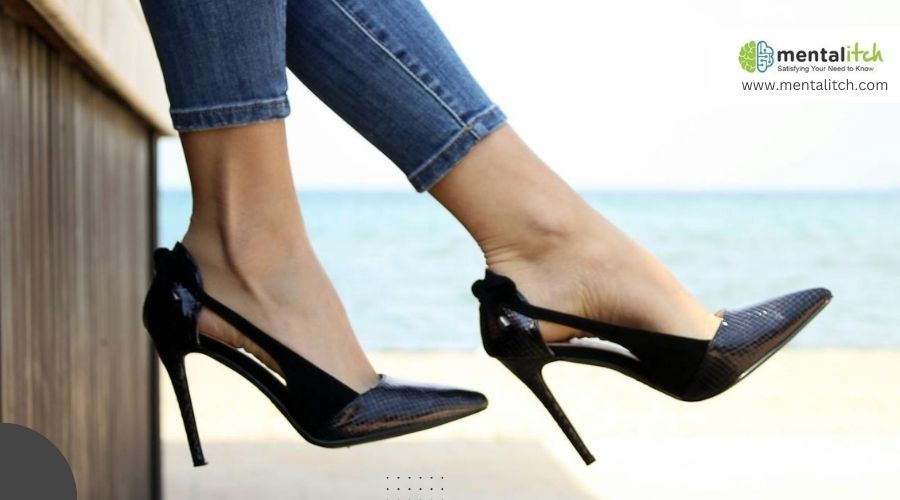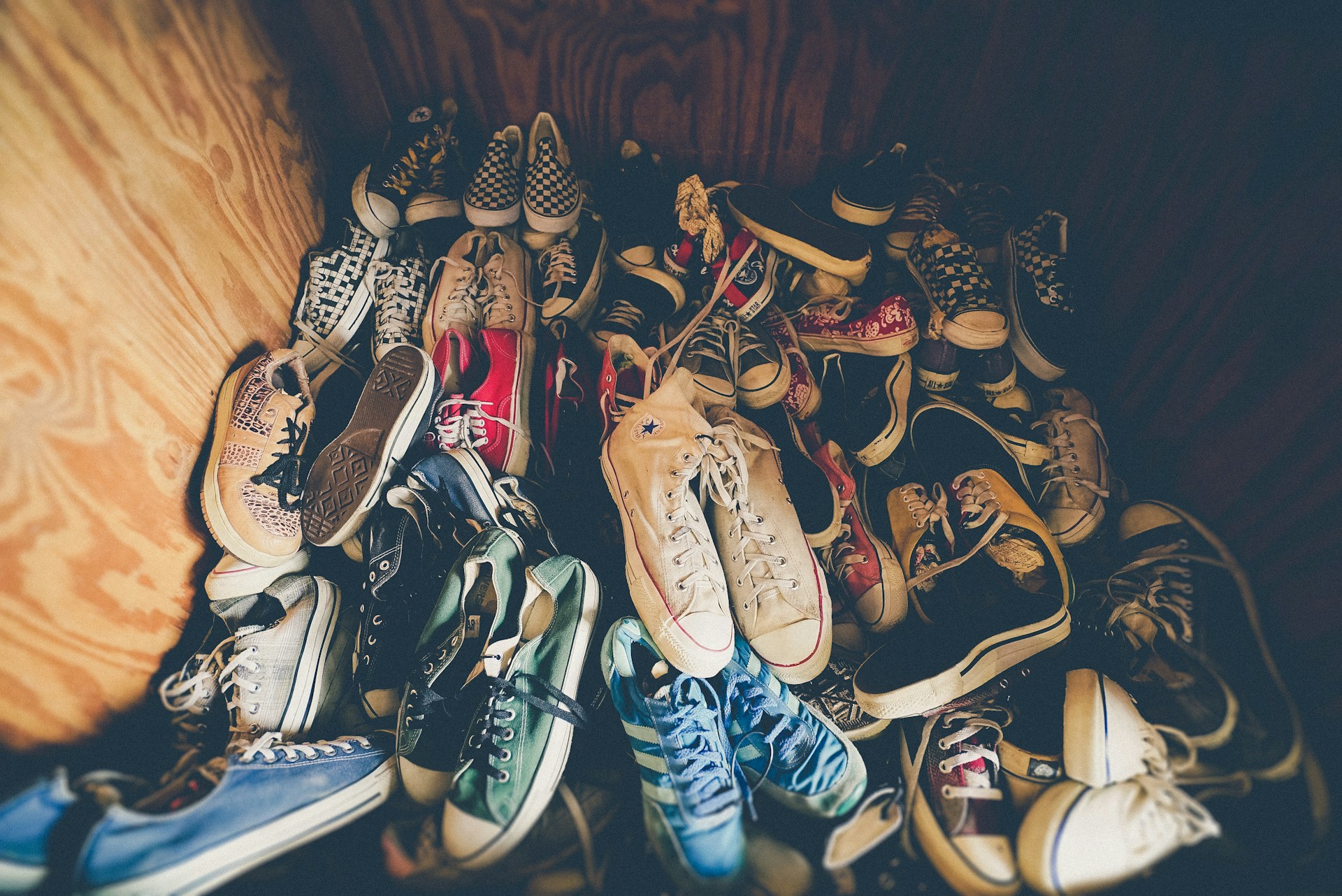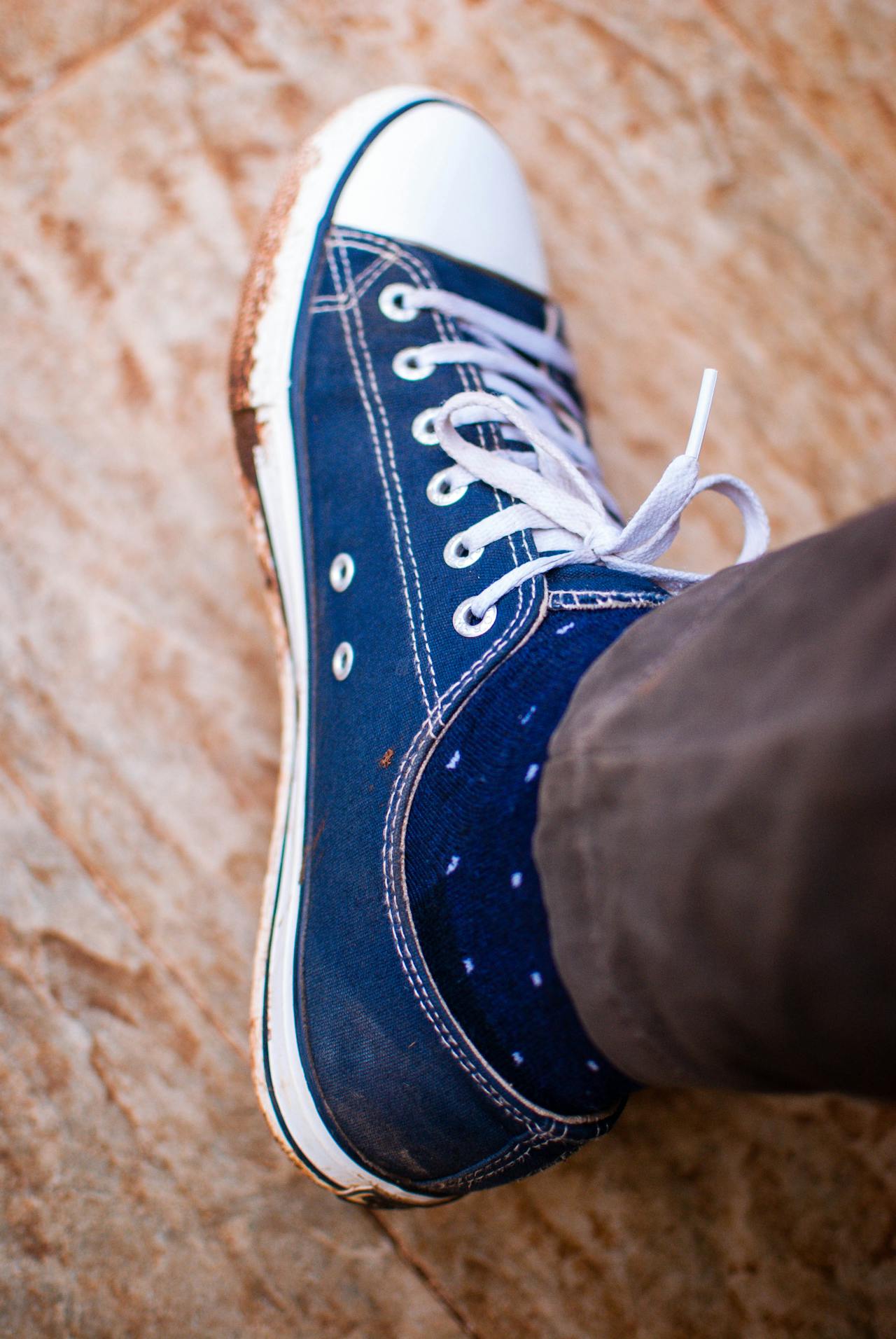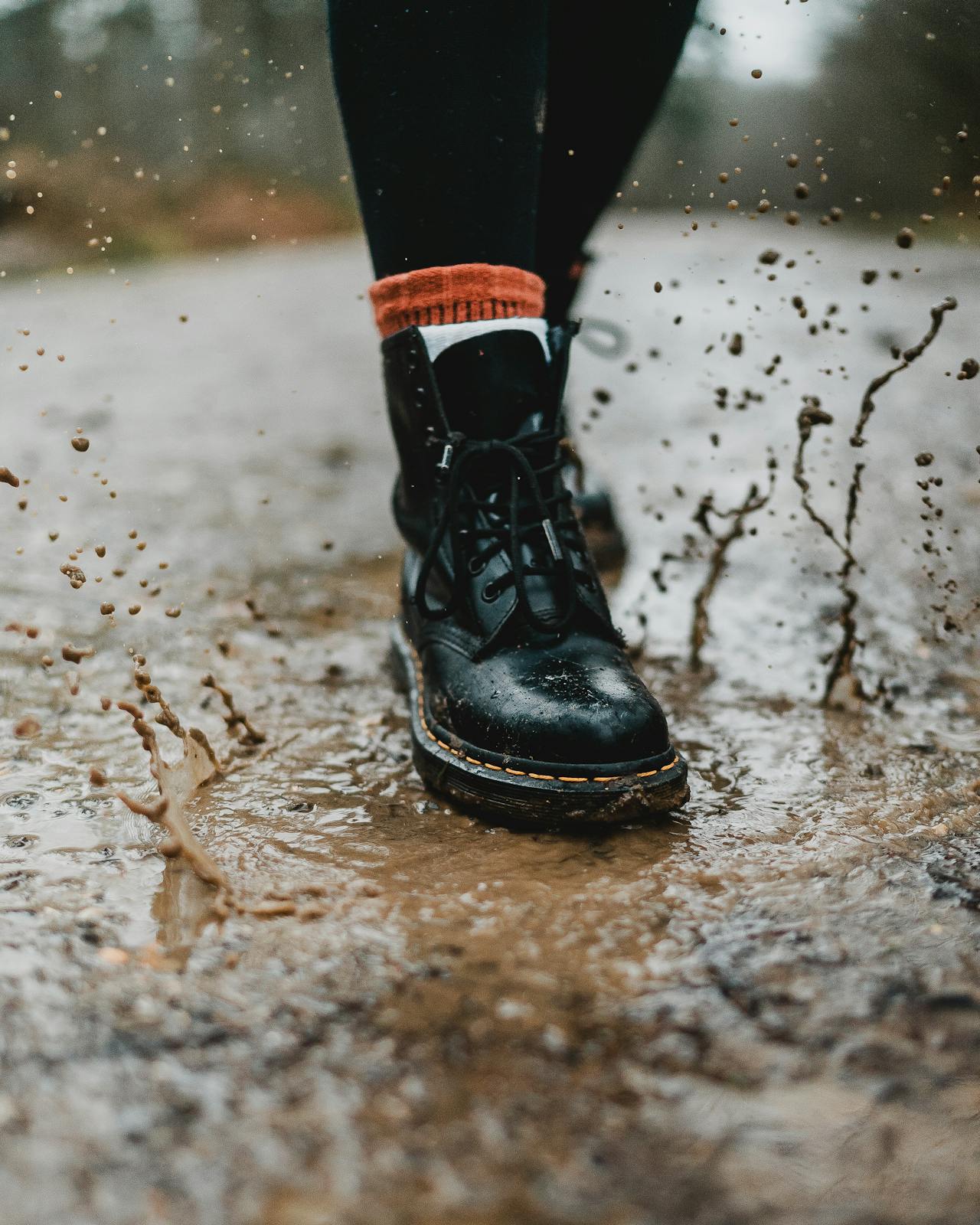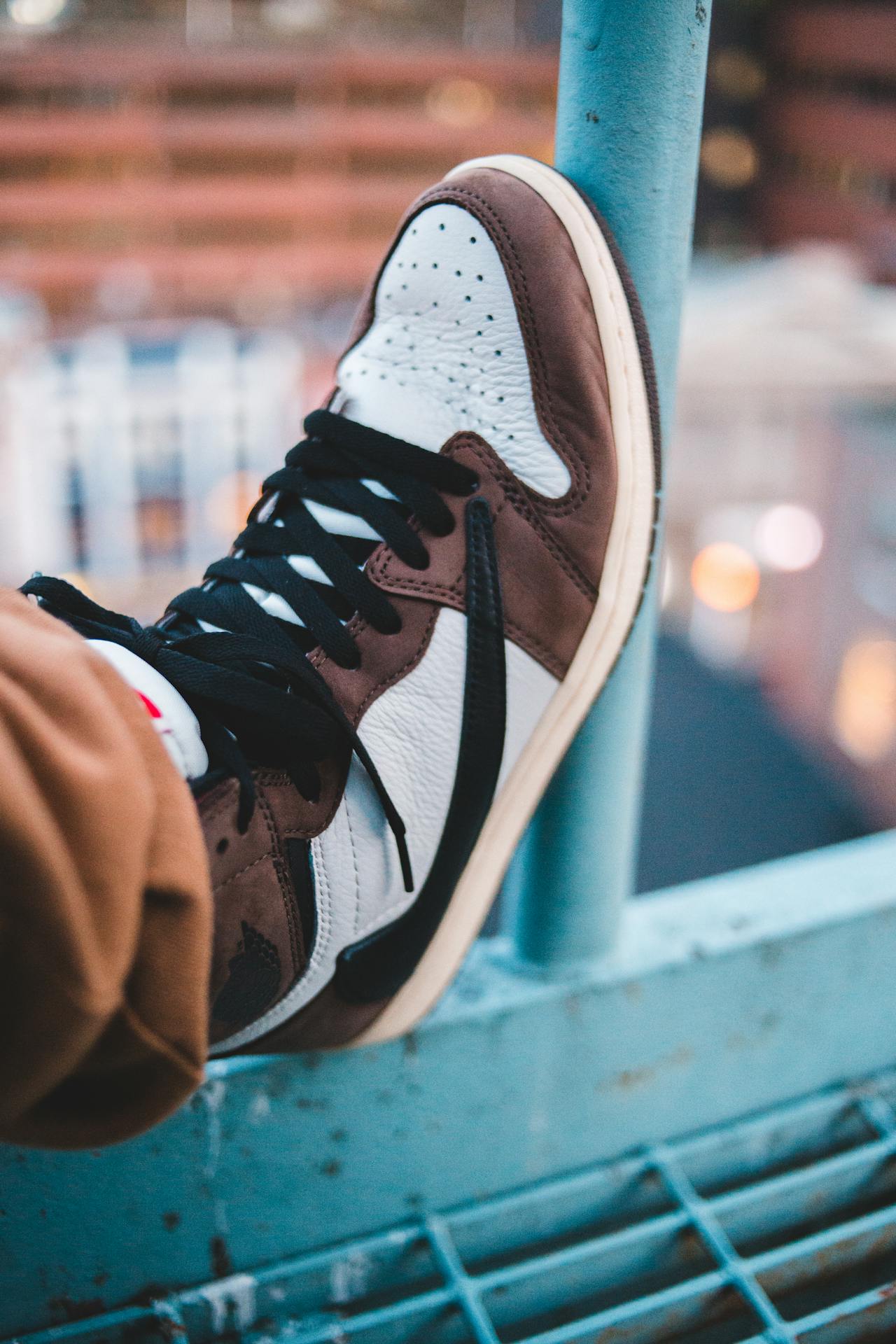Imagine opening your closet to a neatly organized row of shoes, each pair in pristine condition, ready to complement any outfit. You’re probably aware that keeping your shoes in such impeccable shape requires more than just tossing them in after a day’s wear.
However, you might be unknowingly making mistakes that compromise their quality and longevity. From ignoring proper sizing to neglecting the importance of material care, these errors can take a toll on your footwear. As we explore these common oversights, you’ll discover how to avoid them, ensuring your shoes stay supportive and stylish for years to come.
Key Takeaways
- Avoid wearing the same pair daily to prevent excessive wear and odor buildup.
- Store shoes properly to maintain their shape and prevent material damage.
- Use material-specific cleaning methods to ensure shoes last longer.
- Control moisture with silica gel packs to avoid mold and material deterioration.
Ignoring Proper Sizing
Overlooking the importance of proper shoe sizing can lead to a host of uncomfortable and potentially serious foot issues. When you’re selecting shoes, it’s not just about the style or the color; proper sizing is crucial for maintaining your foot health. Wearing shoes that don’t fit correctly is a surefire way to invite discomfort and pain into your daily life.
Shoes that are too small are more than just a tight squeeze; they can cause blisters, corns, and even ingrown toenails, turning every step into a painful ordeal. On the flip side, shoes that are too big aren’t doing you any favors either. They can lead to friction, calluses, and an unnecessary risk of tripping, as your feet slide around inside them. This mismatch in sizing not only affects the overall fit but also undermines the support and functionality your shoes are supposed to provide.
To dodge these issues, make sure you’re getting your feet accurately measured. This simple step ensures a proper fit, keeping your feet happy and healthy. Don’t underestimate the impact of proper sizing on your foot health; it’s a cornerstone of avoiding discomfort and fostering well-being.
Neglecting Storage Conditions
Just as getting your feet accurately measured is essential for foot health, paying attention to how you store your shoes is crucial in preventing damage and maintaining their condition. Neglecting storage conditions can wreak havoc on your shoes, leading to a myriad of issues that could have been easily avoided. Here’s how you can keep your shoes in tip-top shape:
- Avoid Direct Sunlight and Extreme Temperatures: Exposure can deteriorate the materials of your shoes, causing them to fade or crack over time. Find a cool, dark place for storage to preserve their condition.
- Maintain a Dry Environment: Moisture is the enemy of shoe storage, leading to mold, mildew, and unpleasant odors. Ensure your storage area is dry and well-ventilated to protect your shoes.
- Give Them Space: Crowded or cluttered storage can cause scuffs, scratches, and deformities. Allocate enough space for each pair to maintain their shape and support.
- Prevent Pest Access: A clean storage area prevents pests that can damage or create unpleasant odors in your shoes. Regularly check and clean the storage space to keep it pest-free.
Forgetting Regular Cleaning
Neglecting regular cleaning not only affects your shoes’ appearance but also shortens their lifespan significantly. When you let dirt and grime build up, you’re not just dealing with a cosmetic issue. Over time, this neglect can lead to the deterioration of the shoe material, causing your favorite pairs to break down much faster than they should. It’s not just about keeping them looking good; it’s a matter of preventing the growth of bacteria and fungi, which thrive in dirty environments and can cause unpleasant odors.
Using the right cleaning product for each type of shoe material is crucial for effective maintenance. Leather shoes, for instance, require specific cleaners that help maintain their appearance and extend their lifespan. By regularly cleaning your shoes, you’re not just removing dirt; you’re also inspecting them for any signs of wear or damage. This early detection allows for timely repairs or replacements, ensuring your shoes last as long as possible.
Using Inappropriate Cleaners
You mightn’t realize it, but using the wrong cleaners on your shoes can do more harm than good. Harsh chemicals and bleach can quickly ruin materials like leather and suede, while household cleaners can lead to discoloration.
It’s crucial to choose the right cleaning products, whether natural or synthetic, to keep your shoes looking their best and avoid damaging them.
Selecting Proper Cleaners
Selecting the right cleaner for your shoes is essential to avoid damaging the material and ensure they stay in top condition. Using a cleaner specific to your shoe material prevents damage and maintains quality. Here’s how you can make the right choice:
- Leather Shoes: Always use a leather cleaner and conditioner. This preserves their appearance and texture, keeping them soft and durable.
- Suede Shoes: Opt for a suede brush. It’s gentle and doesn’t damage the delicate material.
- Care Instructions: Follow the manufacturer’s care instructions closely for the best results.
- Appropriate Products: Choosing the correct cleaning products and techniques enhances both the longevity and appearance of your shoes, ensuring they look their best for longer.
Damage From Harsh Chemicals
Many shoe materials, including leather, suede, and fabric, can suffer irreversible damage when exposed to harsh chemicals found in inappropriate cleaners. Using the wrong cleaning products, such as those containing bleach, ammonia, or acetone, can cause discoloration, deterioration, and weakening of shoe fibers. These harsh chemicals strip away natural oils and finishes, leading to cracking, fading, and overall degradation of your shoes.
It’s essential to check the manufacturer’s recommendations and opt for gentle, shoe-specific cleaners to prevent such damage. Inappropriate cleaners not only harm the shoe’s surface but also compromise its longevity. Always prioritize the health of your shoes by avoiding these aggressive cleaning agents to maintain their appearance and integrity.
Natural Vs. Synthetic Solutions
Often, choosing between natural and synthetic cleaners for your shoes boils down to understanding their impact on different materials. When cleaning shoes, it’s vital to pick the right approach to avoid damaging your beloved pairs. Here’s a quick guide:
- Natural solutions like vinegar and baking soda are great for cleaning shoes gently without harsh chemicals.
- Synthetic cleaners may contain ingredients harmful to delicate shoe materials such as leather or suede.
- Using inappropriate cleaners can lead to discoloration, fading, or even deterioration, compromising your shoe’s quality over time.
- Always opt for eco-friendly natural solutions when possible, which are safe for both your shoes and the environment. Don’t forget to check the manufacturer’s guidelines or test a small area before fully applying any cleaner.
Overlooking Moisture Control
Ignoring moisture control in your shoe care routine can lead to mold, mildew, and eventual deterioration of your favorite pairs. Moisture isn’t just about wet weather; it’s also about the humidity in the air and sweat from your feet. This can cause not only an unpleasant odor but also significant damage to the shoe structure, affecting their comfort and your foot health.
To maintain your shoe integrity and prolong their lifespan, it’s essential to prevent moisture buildup. One effective way to do this is by using silica gel packs. These moisture-absorbing products are a simple yet powerful tool in your shoe care arsenal. By placing them inside your shoes when you’re not wearing them, you can keep the internal environment dry and healthy. This step is especially crucial in damp climates or if you’ve been caught in the rain.
Storing Shoes Without Support
While addressing moisture control is crucial, it’s equally important not to neglect the way you store your shoes, as leaving them without proper support can significantly harm their shape and comfort. Storing shoes without the right support can lead to a host of issues that not only affect their appearance but also their structural integrity and comfort level. Here’s what you need to know:
- Shoe trees are your best friends: Inserting shoe trees into your footwear after each wear helps maintain their shape, preventing them from becoming misshapen. Shoe trees also absorb moisture, which is a bonus for keeping shoes in optimal condition.
- Creases and wrinkles: Without support, your shoes are more likely to develop creases and wrinkles, which can become permanent. This damage not only affects their look but can also make them uncomfortable to wear.
- Loss of shape: Shoes that lose their shape aren’t just an eyesore; they can also become less comfortable, as the fit may no longer be right for your feet.
- Weakening of materials: Over time, unsupported shoes can develop cracks, weaken the sole, and lose their cushioning, all of which compromise the shoe’s structural integrity and longevity.
Avoid these pitfalls by ensuring your shoes always have the support they need to retain their shape and structure.
Keeping Shoes in Direct Sunlight
You mightn’t realize it, but leaving your shoes out in direct sunlight can seriously damage them. It’s not just the risk of fading colors; the materials themselves can deteriorate and lose their shape.
Sunlight Damage Risks
Storing your shoes in direct sunlight risks significant damage, including fading, discoloration, and material deterioration. When you store your shoes in places where they’re exposed to direct sunlight, you’re not just risking their appearance, but also their structural integrity. To prevent sunlight damage, it’s crucial to understand how harmful UV rays can be to different shoe materials.
Here are four critical effects of sunlight on shoes:
- UV rays weaken shoe fibers, making them more susceptible to breaking.
- Prolonged exposure causes shoes to crack, become stiff, and degrade over time.
- Direct sunlight impacts adhesives, leading to shoes falling apart.
- Leather, fabric, and rubber are particularly vulnerable to sunlight damage.
To safeguard your footwear, store shoes in a cool, dark place away from direct sunlight exposure.
Color Fading Prevention
After discussing the risks of sunlight damage, it’s essential to focus on how to prevent color fading when your shoes are exposed to direct sunlight. Direct sunlight isn’t just warm and uplifting; it’s also a major culprit in causing colors to fade, especially in your vibrant or dark-hued shoes. The UV rays break down the dyes in shoes, with leather and fabric types particularly vulnerable, leading to noticeable color changes over time.
To combat this, store your shoes in a cool, dark place, well away from direct sunlight’s reach. Additionally, regularly rotating and covering your shoes can help maintain their original color and appearance, ensuring they stay as lively and rich as the day you bought them.
Wearing Shoes for Wrong Activities
Choosing the right shoes for your activities isn’t just about style; it’s crucial for preventing discomfort and injuries. Wearing the correct footwear for your specific activity can make a significant difference in how you feel during and after. Here’s why choosing proper footwear matters:
- High Heels for Hiking: It’s a common shoe mistake. Swapping them for appropriate hiking boots can prevent instability, discomfort, and potential injuries. High heels lack the support and grip needed for uneven terrains, making every step a risk.
- Running Shoes for Weightlifting: While running shoes offer cushioning, they lack the stability needed for weightlifting. This can lead to a reduced foundation for lifts, risking not only performance but also injury.
- Walking Shoes for High-Impact Activities: Walking shoes are designed for comfort, not for the high impact of activities like running or aerobics. Using them can lead to foot pain and injuries due to insufficient support.
- Cross Trainers for Specialized Sports: Though versatile, cross trainers may not provide the specialized support needed for specific activities, increasing the risk of discomfort and injuries.
Failing to Rotate Footwear
While selecting the right shoes for specific activities is essential, it’s also crucial not to overlook the importance of rotating your footwear. Rotating footwear isn’t just about style; it’s a key practice for maintaining both your shoes and foot health. By not changing shoes regularly, you’re not only putting undue strain on your feet but also risking discomfort and potential foot problems down the line.
Different shoes offer varying levels of support and cushioning, which can significantly benefit your feet. For instance, wearing the same pair every day can lead to excessive wear on those shoes, reducing their effectiveness and lifespan. This constant use without rotation puts specific areas of your feet under relentless strain, leading to potential discomfort or injury.
Moreover, regularly changing your shoes allows them to air out properly. This not only reduces odor but also extends the life of your shoes by preventing the buildup of moisture, which can degrade materials over time. In essence, rotating footwear is about more than just giving your feet a break; it’s about ensuring optimal foot health and getting the most out of your shoes.
Disregarding Material Care
You mightn’t realize it, but each pair of shoes in your closet requires its own care routine based on the material it’s made from. Leather shoes, for instance, need specific products to keep them from drying out and cracking. On the other hand, synthetic materials demand a different approach to maintain their appearance and durability.
Understanding Leather Maintenance
To keep your leather shoes in top condition, it’s crucial to understand the specific care they require, such as using dedicated leather cleaners and conditioners. Proper leather maintenance is essential not just to clean your shoes, but also to ensure they last longer and look their best. Here’s how you can achieve that:
- Always use a quality leather cleaner to remove dirt and buildup without harming the material.
- Apply a leather conditioner regularly to keep the leather supple and prevent cracks.
- Avoid using harsh chemicals or inappropriate cleaning methods that can damage leather shoes.
- Store your leather shoes with shoe trees inserted to maintain their shape and prevent creases.
Synthetic Materials Care
Just as leather shoes demand specific care, so do synthetic materials like PVC, PU, and polyester to ensure their durability and appearance. The best way to keep your synthetic shoes in top condition is by avoiding harsh chemicals or cleaners, as they can damage and deteriorate the material. Instead, wipe them down with a damp cloth and mild soap to remove dirt and stains gently.
It’s essential to regularly clean and condition your synthetic shoes to keep them looking new and extend their lifespan. Also, make sure to store synthetic shoes in a cool, dry place away from direct sunlight to prevent fading and cracking. This careful approach will ensure your synthetic footwear remains in great shape for years to come.
Conclusion
In conclusion, taking care of your shoes isn’t just about keeping them clean; it’s about understanding their needs and treating them right. Don’t make the mistake of ignoring proper sizing, storage, or cleaning practices. Remember, using the wrong cleaners or neglecting moisture control can ruin your favorite pairs.
By avoiding these common pitfalls and paying attention to material care, you can ensure your shoes last longer and continue to support your feet comfortably. So, treat your shoes well and they’ll do the same for you.

